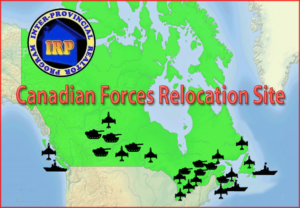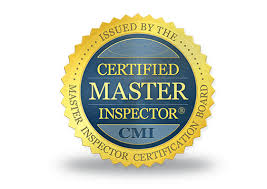Military Relocation Guide – Resources for your Move
Moving is a big part of life for Canadian Armed Forces (CAF) members and their families. It can be exciting, but also a bit overwhelming with all the logistics, paperwork, and financial planning involved. Thankfully, the Canadian Armed Forces Relocation Program is designed to help make these transitions smoother. This guide will walk you through the key aspects of military relocation and offer useful insights to help you along the way.
What You Need to Know About Relocation Benefits
The Canadian Armed Forces Relocation Directive (CAFRD) outlines the support available to eligible members. If you’re a regular CAF member moving to a new workplace that’s quite a distance from your current post, you’re likely eligible for benefits. The same applies to Reserve Force members if their move is approved by the Director of Compensation and Benefits Administration (DCBA). These benefits cover moving costs for your family and household goods, plus assistance with travel, housing, and other essentials.
Who’s Involved in the Process?
There are several key players who help make relocations happen:
- Director of Compensation and Benefits Administration (DCBA): Handles move approvals for regular and reserve CAF members.
- Brookfield Global Relocation Services (BGRS): The go-to organization that coordinates relocation services and provides essential
 support.
support. - Base Traffic Movement Coordinator (MC): Your first stop for anything related to moving your household goods and effects.
- Third Party Service Providers (TPSPs): A directory of professionals such as real estate agents is available through BGRS.
- Military Family Resource Centres (MFRCs): Offer fantastic programs and services to help families adjust, including childcare, schooling, and employment support for spouses.
- Military Family Services (MFS): A great resource for military families, providing helpful tools and a Family Information Line (FIL) for additional support.
How the Relocation Process Works
- Receiving Your Posting Message – Once you get the official word, it’s time to start planning.
- Register with BGRS – Sign up through their website or mobile app using the details in your posting message.
- Complete a Preliminary Relocation Assessment – This step helps determine your specific needs and entitlements.
- Planning Session with BGRS – A short session to help you navigate their system and understand what’s available to you.
- House Hunting Trip (HHT) – If needed, you can apply for a trip to explore housing options at your new location. Family members can join, making it easier to decide.
- Moving Household Goods and Effects (HG&E) – BGRS will assist in setting up your move and help ensure everything goes smoothly.
- Travel to Your New Location – Depending on your circumstances, you’ll either drive your own vehicle or use commercial travel options.
- Requesting Funds – Advances and reimbursements are handled through the BGRS platform, usually transferred via electronic payment.
- Choosing Service Providers – Once your relocation assessment is done, you can select service providers through the BGRS website.
- BGRS Military Relocation Brief – Working with an approved BGRS realtor reduces stress, saves time, and ensures compliance with military relocation policies – Read More
What Relocation Benefits Cover
- House Hunting Trip (HHT) – Helps cover accommodation and meals while you find a home. Read more about HHT

- Interim Lodging, Meals & Miscellaneous Expenses (ILM&M) – If needed, this helps with temporary housing, meals, and a little extra for incidentals.
- Movement Grant – A small allowance to help offset minor moving expenses.
- Travel Assistance – Covers mileage, accommodations, and meals for your trip to the new location.
- Posting/Relocation Allowance – Provided through your Base/Wing or centrally managed for Reserve members.
- Real Estate Assistance – Helps with real estate commissions and legal fees when buying or selling a home.
- Rent and Lease Assistance – Covers rental deposits, agency fees, and credit checks for new rentals.
- Shipping of Household Goods – The CAF covers packing, loading, insuring, and transporting your household items.
Things to Keep in Mind
- Plan Early – The sooner you start, the smoother your move will be.
- Use Available Resources – The CAF offers a wealth of tools and programs to make relocations easier.
- Budget Carefully – Some costs may come out of pocket, so it’s good to plan ahead.
- Take Care of Your Family – Keep everyone in the loop, and don’t hesitate to reach out to support services if needed.
- Explore Housing Options – On-base and off-base housing each have their pros and cons. Choose what works best for your family.
- Look After Your Mental Health – Moving can be stressful, so lean on friends, family, and support networks.
- Stay Flexible – Plans can change, so be ready to adapt as needed.
- Keep Documents Organized – Having everything in one place will save a lot of headaches down the road.
Alternatives to a Standard Move
- Self-Move – If you have fewer belongings, you might opt to rent a moving trailer and handle things yourself.
- Hiring a Moving Company on Your Own – If the contracted mover can’t provide service, you may need to arrange one yourself.
- Storage in Transit (SIT) – Temporary storage can be arranged if you need extra time before moving in.
- Imposed Restriction (IR) – If there’s a valid reason to delay moving your family, you can apply for a temporary hold on relocation.
- Moving Tips – A valuable resource for Military & RCMP personnel who are moving through CAF Relocation Program. Read Moving Tips
Relocating is a big life event, but with the right resources and planning, it doesn’t have to be overwhelming. By staying informed and taking advantage of available support, you can make your transition as smooth as possible. Safe travels and best of luck settling into your new home!
